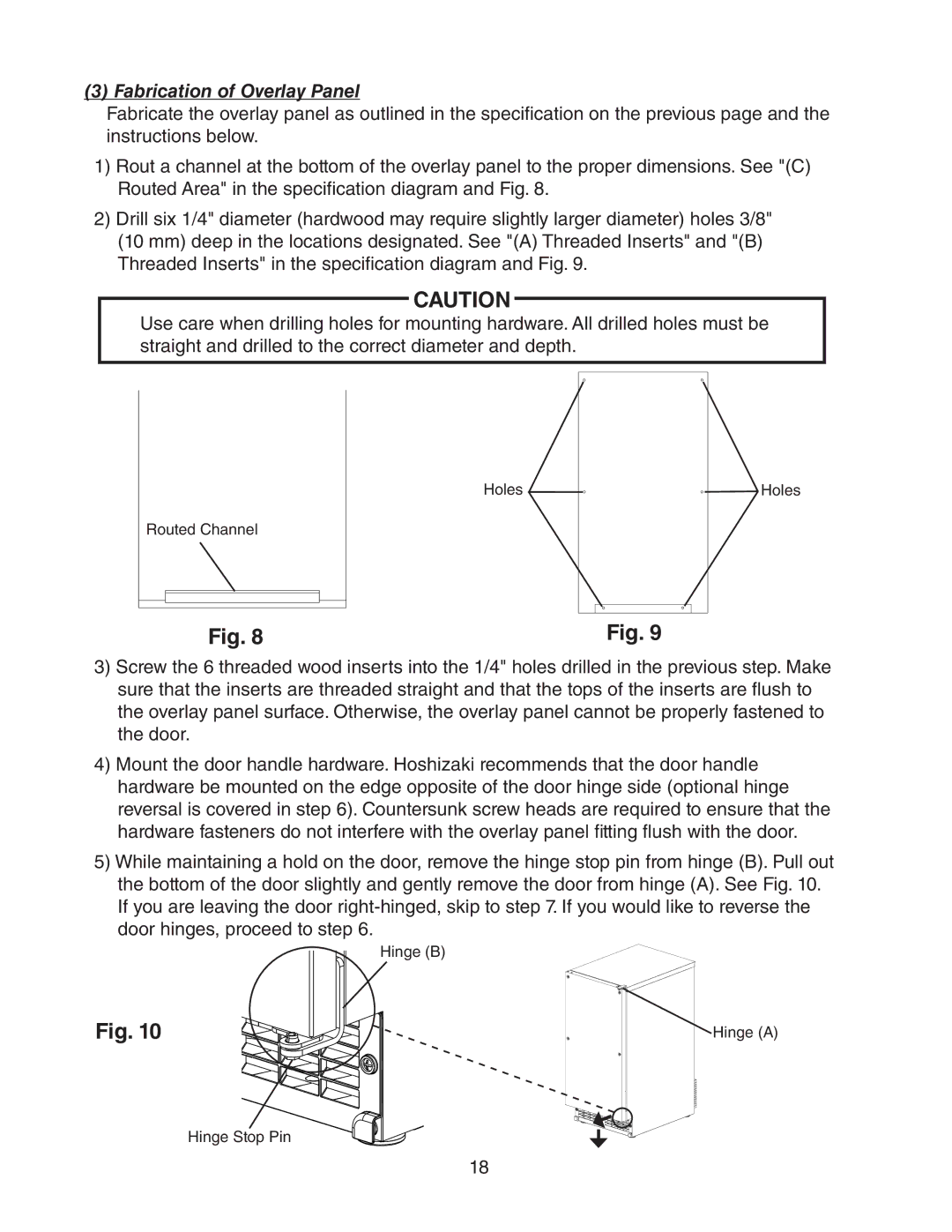C-100BAF-DS, C-100BAF specifications
The Hoshizaki C-100BAF-DS and C-100BAF are two innovative ice makers designed for high efficiency and reliability, catering to the diverse needs of restaurants, bars, and various commercial settings. Known for their durability and advanced features, these models are exemplary in producing premium quality ice while maintaining operational efficiency.One of the standout characteristics of both the C-100BAF-DS and C-100BAF is their ability to produce crescent ice, a desirable form valued for its aesthetic appeal and slow melting properties. This makes it ideal for drinks as it minimizes dilution, enhancing the drinking experience. The crescent ice also facilitates a consistent product presentation, making it a popular choice in the hospitality industry.
Equipped with advanced technologies, the Hoshizaki models utilize a patented ice-making process that ensures optimal production rates and ice quality. The C-100BAF-DS can produce up to 100 pounds of ice per day, making it suitable for busy environments without compromising on performance. Additionally, the C-100BAF features a built-in ice storage bin that can hold up to 80 pounds of ice, allowing for a continuous supply throughout peak service periods.
Both models are designed with energy efficiency in mind. They utilize a high-efficiency compressor along with a unique heat-exchange system that reduces energy consumption while maximizing output. This not only lowers operating costs but also supports environmentally friendly practices, making these machines a sustainable choice for businesses.
Another important feature is the ease of maintenance designed into these ice makers. Hoshizaki has implemented an efficient self-cleaning function that simplifies regular upkeep, ensuring hygienic ice production and minimizing the risk of contamination. Additionally, the machine's compact design allows for easy installation in limited spaces, making it versatile for various commercial layouts.
In conclusion, the Hoshizaki C-100BAF-DS and C-100BAF are exceptional ice-making machines that combine efficiency, quality, and user-friendly features. Their innovative technologies and characteristics make them indispensable for commercial operations looking to enhance their beverage services and cater to customer satisfaction.

